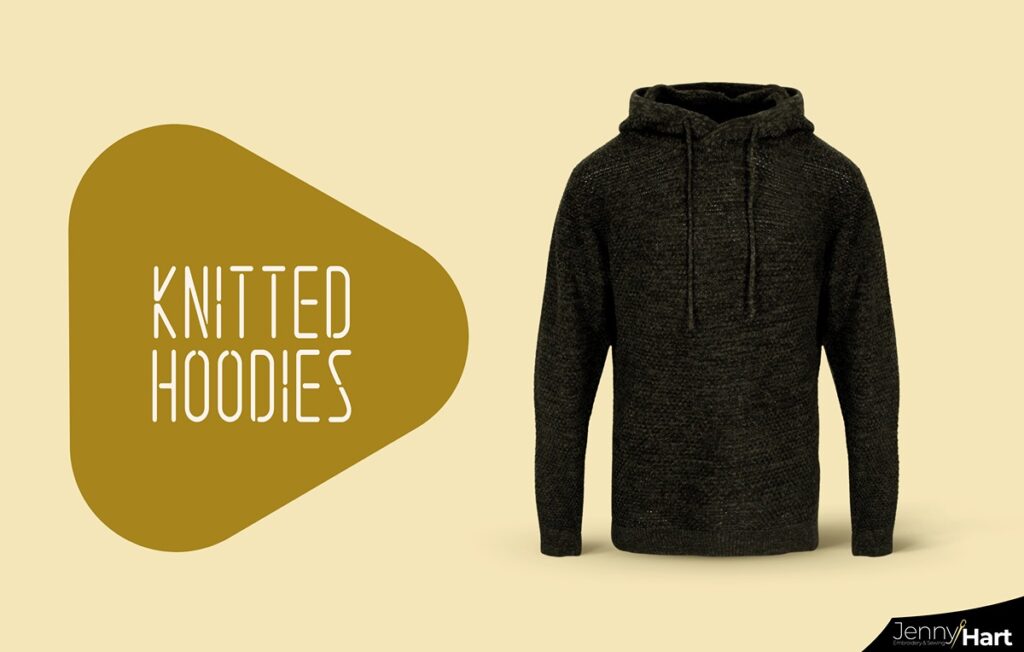The hoodie is one of the most popular items today that is worn by everyone. It can be made out of many different materials, but that doesn’t make every material suitable for making a hoodie. Despite the material, there is a certain process of stitching to sew the materials together. So, how are hoodies made? Stick around and find out.
Key Takeaways
- To make a hoodie first you need to know what kind of fabric you are working with.
- The material is useless, however, without a design that can be used to create a prototype.
- The prototype is made into different sizes and put together by sewers.
- The production of hoodies is done with the help of expensive machinery.
- A lot of effort is put into the hoodies that you love and wear.
How Are Hoodies Made?

Hoodies are made by putting different shapes of fabric together. This isn’t an easy task to do by hand, but that doesn’t make it impossible. It’s a task that requires a lot of patience and precision when taking measures.
So, instead of doing it by hand, for mass manufacturing, it takes quality machines and a lot of collaboration to stitch the hoodies together, and produce them, to then be able to sell the finished product. The process can be chalked down to a few crucial steps.
First on the list is the type of fabric you are using. The material is the crucial factor when measuring up the quality of the product. So, this obviously applies to hoodies as well. Because like any other item, it requires quality fabric suited specifically for the weight of the hoodie, its warmth, and its comfort.
What Materials Are Used When Making A Hoodie?
The materials matter for the style and weight of the hoodie, as well as the purpose it is used for. That being said, the most commonly used materials in the making of a hoodie include:
You can also read about the types of hoodies.
Cotton

Cotton is a great material to make hoodies out of. It is breathable, comfortable, and soft on the skin. The perfect baggy hoodie look you want can be perfectly achieved with cotton.
100% Pure cotton is great and lightweight. It’s non-allergenic and doesn’t irritate the skin like polyester blends or other synthetic materials.
Cotton can be an amazing fabric for making french cloth, sweatshirt-knit types of hoodies, or even jersey-knit ones. This just goes to show how amazing cotton variations are and how perfect their functionality is when hoodies are in question.
Stretch fabrics
These fabrics include polyester or nylon spandex blends. They are perfect for movability and active people that work out, run, or practically anyone who goes to the gym. Stretch fabrics are mostly made into tight-fitting clothes; this includes hoodies. Spandex hoodies aren’t that fashionable per se, but they are amazing for flexibility and athleisure.
Polyester is a synthetic material, unlike cotton. Therefore, polyester blends are the cheapest option for making hoodies when it comes to mass production. This makes them durable and prone to wind or stains, as polyester is a synthetic fiber made out of toxic chemicals and petroleum that make it elastic.
It’s stronger than cotton but unmistakably less environmentally friendly. It could irritate sensitive skin whereas cotton is a natural product that is softer and a lot more sensitive to the skin.
You can also learn how to remove the logo from your hoodie.
Wool

Wool is one of the warmer materials when it comes to making hoodies. This ensures premium comfort and warmth during the cold seasons. It is a stretchy and durable fabric that most people overlook when buying a hoodie. Despite that, wool is a natural and traditional material that hoodies are made of.
Fleece
Fleece is a common material used for making hoodies. You can make fleece into lightweight or heavyweight material depending on the stitch. However, mostly it is regarded as lightweight, so you should wear it layered with something underneath. It’s the material that is replacing the traditional wool hoodie day by day. Not only is it easy to take care of, but also it’s very stylish and cozy.
How To Manufacture A Hoodie?

Now that we’ve determined what materials are most suitable for making a hoodie. There are a few steps that you have to follow to make a hoodie.
First of all, the hoodie should be designed by someone for a specific purpose. That means making a simple sketch of the design. Then, you have to choose the fabric you are working with. Choose the material according to your preferences. Usually, this would be cotton (sweatshirt material) or fleece for a warm, heavyweight type of hoodie; or jersey, or t-shirt material for a lightweight one.
To make the hoodie you need to have the fabric already produced and bought so you can start configuring the sewing process. When the material and design are determined, the designer then makes a prototype that is put together and tested.
After the look is finalized and has undergone a series of tests, this piece of clothing can then go into mass production. When the material, for example, cotton, is obtained, it is produced by removing the seeds and twigs and polishing it out with the help of machines.
Then, workers use different machines to turn it into yarn, which can only then be knitted and turned into fabric. After acquiring the needed yarn, the fabric is washed, napped, and dyed. The made fabric is then used by manufacturers who look at the reference and take measurements into different sizes following the outlines of a given size to properly create the knitwear of the hoodies.
By hand, you can start by making a body. You cut the fabric into two sides that are going to be sewn in together. Then, you make two pieces that are designed as the sleeves, by the given measurements and lastly, you make the pockets and the hood and you attach them to the shirt that is already made. When you’re done, cut out two strips for the wristbands and the bottom band of the hoodie. Then, the hoodie should be seamed and stitched together to create the final product.
For mass production, this is all done with machines handled by workers to make sure everything is sewn together perfectly and goes according to plan. When the product is done, it is pre-washed so it shrinks into size. Of course, the last step is to ship and sell the product for customers to buy.
You can also find out about t-shirt alternatives.
Final Words
The production of hoodies is no joke. A lot of factors determine the quality and look of the hoodie in question, such as materials. Hoodies can be made from a variety of materials, such as cotton, polyester, wool, or fleece.
Each material comes with its ups and downs. Although there are huge teams of people working on even the smallest details in the manufacturing process of hoodies, it’s also possible to make it yourself.
The same rules apply, and if you know how hoodies are made in general, then you’ll be on your merry way to making one on your own!
I graduated from London College of Fashion, and I’ve been working for a Fashion Design company for 10 years. My other hobbies are going to the gym and reading.



